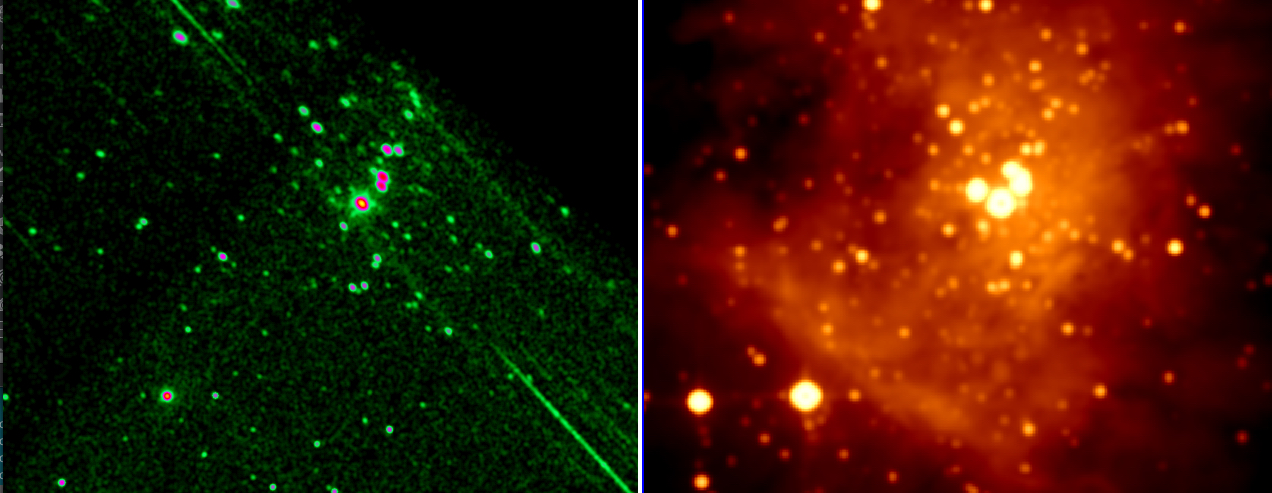
 Credit: X-ray: CXC; NASA; N. Schulz et al.; Infrared: Two Micron All-Sky Survey
Credit: X-ray: CXC; NASA; N. Schulz et al.; Infrared: Two Micron All-Sky Survey
Swords of Orion
One of the most recognizable constellations in the sky is the constellation of Orion. Orion is famous for its linear arrange of 3 bright, massive stars, Orion's belt. To the northeast of the belt, the bright red star Betelgeuse, the most colorful and dangerous stars in the night sky, is easily visible, and to the southwest, the bright blue-white star Rigel is easily seen. Hanging below the belt is a small, spectacular nebula, Messier 42, visible to the unaided eye, which makes up part of the Sword of Orion. The nebula is actually one of the nearest star-forming factories to us, so study of this nebula provides key information for our understanding of how stars form, and of how the formation of massive stars can affect the birth of many generations of stars to come. Stars form out of thick clouds of gas and dust, and this raw material often obscures our view of the interesting things going on in the stellar nursery. But X-rays produced by these young stars can penetrate through this obscuration, and so X-ray studies have played an important role in documenting the properties and processes of star formation in the Orion Nebula and elsewhere. The image above right is an infrared image of M42, prominently displaying a small bright cluster of stars near the center known as the Trapezium. The brightest stars in the Trapezium have masses which are 15 to 30 times the mass of our Sun and are less than one tenth the Sun's age. The image on the left is an X-ray image of this same field obtained by the Chandra X-ray Observatory. The exceptionally high-resolution images Chandra obtains are the best means astronomers have to disentangle the tightly-packed stellar X-ray emission from the stars in this cluster. This particular image was obtained with the Chandra High Energy Transmission Grating in place, so that the bright X-ray sources produced dispersed spectra, visible as the bright sword-like streaks stretching from the upper left to lower right in the X-ray image around the brighter stars. These streaks contain information about the composition of the hot gas, its temperature and density, and on the velocities and dynamical properties of the million-degree hot gas which produces the X-ray emission.
Published: October 14, 2019
<
HEA Dictionary ● Archive
● Search HEAPOW
● Other Languages
● HEAPOW on Facebook
● Download all Images
● Education ● HEAD
>

Each week the HEASARC
brings you new, exciting and beautiful images from X-ray and Gamma ray
astronomy. Check back each week and be sure to check out the HEAPOW archive!
Last modified Tuesday, 27-Feb-2024 10:10:18 EST


